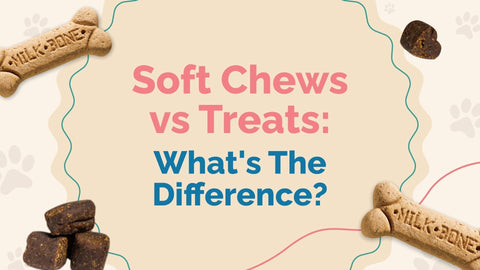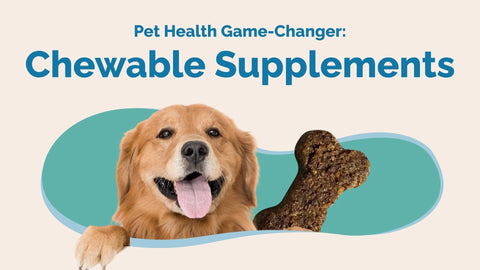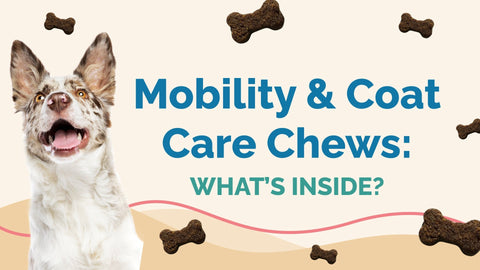

Are you looking to switch things up in your canine companion's food bowl? You might have heard about the raw food diet for dogs, a feeding regimen that's gaining popularity among many devoted dog lovers. If you're intrigued, buckle up because we're about to explore the ins and outs of a raw diet.
What is the Raw Diet for Dogs?
A raw diet for dogs, often known as Biologically Appropriate Raw Food (BARF) or species-appropriate diet, is a type of feeding regimen that involves serving uncooked meat, along with other raw foods like fruits, vegetables, and sometimes dairy and eggs.
The philosophy behind a raw diet is to mimic a dog's natural ancestral menu, fundamentally a carnivorous one, for improved health and vitality. Proponents of the raw diet believe that cooking can destroy vital nutrients and enzymes that dogs need for proper digestion and health.
What’s Included in a Raw Diet?
Muscle Meat
This often makes up the bulk of the diet. It can be served on the bone or boneless. It might include chicken, beef, lamb, fish, or other types of meat.
Organ Meats
Foods like liver, kidney, and heart are high in nutritional value.
Bones
Raw or lightly steamed bones can be included for added nutrients and dental health benefits.
Fruits and Vegetables
They provide vitamins, fiber, and some of the carbohydrates dogs need. Common choices include carrots, broccoli, apples, and spinach.
Dairy and Eggs
Some raw diets include these as a protein source and for added nutrients.
Firstly, the most crucial thing to remember is that embarking on a raw food journey for your dog should always be under the guidance of a professional, like a vet or a canine nutritionist. Individual dog needs can vary, and ensuring a balanced diet is key when combining homemade dog food with additional supplementation.
So, without further ado, let's dive into the world of raw diets!
How to Get a Dog Started On a Raw Diet
1. Speak with a Professional
We can't stress this enough – talk to your vet or a canine nutritionist before you start. They can help you tailor a plan to meet your dog's specific needs, taking into account their age, breed, weight, and overall health. Additionally, they may have recommendations for additional canine supplements to address any existing deficiencies.
2. Start Slow
Transitioning to a raw diet shouldn't happen overnight. Begin by introducing small amounts of raw food into your dog's regular diet and gradually increase the raw portion over a few weeks. This slow transition will help your dog's digestive system adjust.
3. Choose the Right Foods
While the mainstay of a raw diet is meat, it's also important to include a variety of other foods for balanced nutrition. This can include organ meats (like liver and kidneys), raw bones, vegetables, and some fruits. Remember, variety is the spice of life!
4. Ensure Safe Food Handling
Just like with raw meat in your own diet, it's important to handle your dog's raw food safely to avoid bacterial contamination. Always wash your hands, clean surfaces and utensils thoroughly, and store raw food properly.
Potential Benefits and Risks of a Raw Dog Food Diet
Like most things in life, a raw diet has its pros and cons.
Benefits of raw dieting for dogs can include:
- Healthier coat and skin
- Cleaner teeth and fresher breath
- Improved digestion and smaller stools
- Increased energy levels
However, the risks can be:
- Nutritional imbalances: Ensuring a balanced diet is tricky, especially when you're preparing it yourself.
- Bacterial contamination: Raw meats can contain harmful bacteria like E. coli and Salmonella.
- Choking hazard: Certain bones or bone fragments can cause choking or injuries in your dog's digestive tract.
Tips for Success
Successfully transitioning your dog to a raw diet takes patience and diligence. Here are a few quick tips:
Observe Your Dog: Keep an eye on how your dog is reacting to the new diet. Watch for changes in their energy level, weight, coat, stool consistency, and general behavior.
Get Creative with Variety: A varied diet is more likely to provide a full range of needed nutrients. Experiment with different types of meats and vegetables.
Regular Vet Checkups: Regular vet visits are crucial to ensure your dog is maintaining optimal health on their new diet.
Wrap Up
A raw diet can offer several benefits for your dog, but it's not a decision to be taken lightly. Proper preparation and handling, along with a carefully balanced meal plan, are essential for success. Always consult with a professional to ensure you're making the best choice for your beloved fur baby.
And there you have it, a quick-start guide to raw diets for dogs! Remember, every dog is unique and what works for one might not work for another. So, if you decide to embark on the raw food journey, do it with care, patience, and a whole lot of love.




